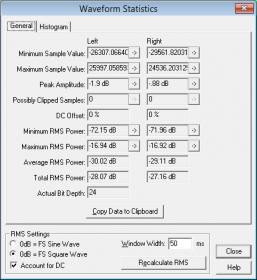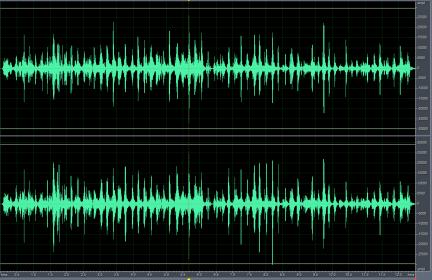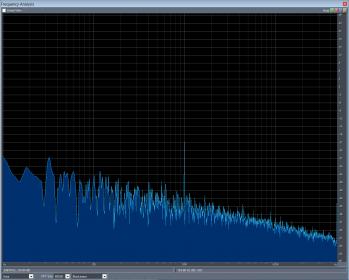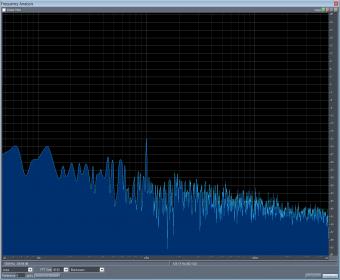What??? You can't look at the peak levels of the key jingling part that way. The peaks are not just made up of ultrasonics but both audible and ultrasonics. As such you can't just compare their levels to purely ultrasonic tones Arny has inserter.
We can take one step toward a more accurate comparison by getting rid of lower frequencies. I did this hear by filtering everything below around 23 Khz:
I put a red line where the highest peak is. If you go to the right you see that its level is below -6 db, not -1 db.
But even that is not enough to make the comparison proper. That peak is only hit one and only one time on that clip (denoted by the red circle). Unless someone has proof that the only way to tell the difference is to listen to that one single transient, then we can't go by that peak either. Remember, Arny's test tones are not a single transient. They are continuous tones.
I eyeballed a level that is likely to hit more of the peaks in blue. That level is now below -15 db (sorry, I chopped off part of the "5" in 15 on the vertical scale). Even that doesn't assure us that we are capturing the areas that showed a difference. But even if it did, compare the level of the blue line to the magnitude of the test tones on the right.
The average RMS amplitude of the key jingling part (post filtering) by the way is -41 dbfs. The average RMS amplitude of the tones is just -6 dbfs. That is a difference of 35 dbfs.
I don't know what a bush league move is

. I do know that you can't analyze the high frequency content of a track by just looking at its total amplitude per above. The discussion is about specific part of the spectrum. You cannot take full spectrum numbers and compare them to ultrasonic tones in the context of ultrasonic induced IM distortion. Your analysis must be frequency aware by definition which it was not.
I have run his test and my laptop did not generate any IM distortions even at those elevated levels. Arny has a theory but no data whatsoever that says the reason we can tell the files apart is due to high amplitude ultrasonic tones.
Did you hear a difference right at that peak?
So no, there is no way you can represent those ultrasonic tones as being representative of music or the key jingling part. Not even close. If a system does generate IM distortion with those tones as a result, you have no idea if that is the reason you are hearing a difference. Arny has a theory here. He has no proof that any of this IM talk has any bearing on the results. No cause and effect has been shown. We can throw stuff at the board and see what sticks. Doing that takes better attempts and explanation than what is being put forth.
BTW, I appreciate that you abide by the rules of WBF to keep your posting professional with less personal accusations. We are discussing a hobby and not life and death.











